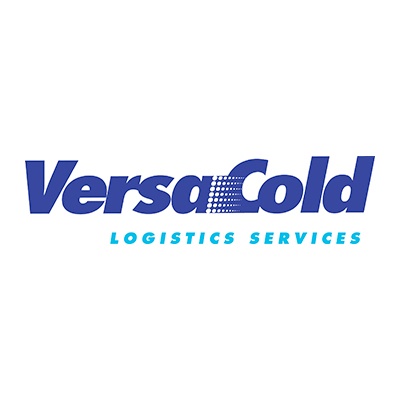
Like any industry, the cold chain logistics world has its own unique language that sometimes needs additional explanation for people outside the industry. To help you understand some complex terms that are specific to the industry, VersaCold has put together a list of commonly used terms and definitions as defined by trusted industry sites.
Check out these other interesting articles:
The A to Z of Cold Chain – Part 1
http://blog.versacold.com/the-a-to-z-of-cold-chain-part-1
The A to Z of Cold Chain – Part 2
http://blog.versacold.com/the-a-to-z-of-cold-chain-part-2
This week’s entry will start where Part 2 left off and define important cold chain terms starting with the letters P to Z.
Packing List: A document containing information about the location of each Product ID in each package. It allows the recipient to quickly find the item he or she is looking for without a broad search of all packages. It also confirms the actual shipment of goods on a line item basis. - Inbound Logistics
Pallet: The platform which cartons are stacked on and then used for shipment or movement as a group. Pallets may be made of wood or composite materials. Some pallets have electronic tracking tags (RFID) and most are recycled in some manner. - CSCMP
Point-of-Purchase (POP): A retail sales term referring to the area where a sale occurs, such as the checkout counter. POP is also used to refer to the displays and other sales promotion tools located at a checkout counter. - CSCMP
Procurement: The activities associated with acquiring products or services. The range of activities can vary widely between organizations to include all of parts of the functions of procurement planning, purchasing, inventory control, traffic, receiving, incoming inspection, and salvage operations. - CSCMP
Product ID: A method of identifying a product without using a full description. These can be different for each document type and must, therefore, be captured and related to the document in which they were used. They must then be related to each other in context (also known as SKU, Item Code or Number, or other such name).- Inbound Logistics
Proof of Delivery (POD): Information supplied by the carrier containing the name of the person who signed for the shipment, the time and date of delivery and other shipment delivery-related information. - Inbound Logistics
Purchase Order (PO): The purchaser's authorization used to formalize a purchase transaction with a supplier. The physical form or electronic transaction a buyer uses when placing an order for merchandise. - Inbound Logistics
Quality Control (QC): The management function that attempts to ensure that the foods or services manufactured or purchased meet the product or service specifications. - CSCMP
Rack: A piece of equipment which is used to store materials off of the floor. Racks will typically have shelves, but may be designed to hold materials vertically such as lengths of pipe of metal bar stock. - CSCMP
Radio Frequency Identification (RFID): The use of radio frequency technology including RFID tags and tag readers to identify objects. Objects may include virtually anything physical, such as equipment, pallets of stock, or even individual units of product. RFID tags can be active or passive. Active tags contain a power source and emit a signal constantly. Passive tags receive power from the radio waves sent by the scanner / reader. The inherent advantages of RFID over bar code technology are: 1) the ability to be read over longer distances, 2) the elimination of requirement for “line of sight” readability, 3) added capacity to contain information, and 4) RFID tag data can be updated / changed. - CSCMP
Receiving Dock: Distribution center location where the actual physical receipt of the purchased material from the carrier occurs.- Inbound Logistics
Request for Proposal (RFP): A document which provides information concerning needs and requirements for a manufacturer. This document is created in order to solicit proposals from potential suppliers.- Inbound Logistics
Return on Investment (ROI): The profit or loss resulting from an investment transaction, usually expressed as an annual percentage return. ROI is a popular metric for use in showing the value of an investment in new facilities, equipment or software vs. the cost of same. - CSCMP
Scalability: 1) How quickly and efficiently a company can ramp up to meet demand. See also uptime production flexibility. 2) How well a solution to some problem will work when the size of the problem increases. The economies to scale don't really kick in until you reach the critical mass, then revenues start to increase exponentially. - CSCMP
Seasonality: A repetitive pattern of demand from year to year (or other repeating time interval), with some periods considerably higher than others. Seasonality explains the fluctuation in demand for various recreational products which are used during different seasons.- Inbound Logistics
Shipping Manifest: A document that lists the pieces in a shipment. A manifest usually covers an entire load regardless of whether the load is to be delivered to a single destination or many destinations. Manifests usually list the items, piece count, total weight, and the destination name and address for each destination in the load. - Inbound Logistics
Statement of Work (SOW): A document that captures and acknowledges mutual agreement on the work activities, deliverables and timeline that a vendor will execute against in performance of work for a customer. Detailed requirements and pricing are usually specified in a Statement Of Work, along with various other terms and conditions. - CSCMP
Stock-Keeping Unit (SKU): A category of unit with a unique combination of form, fit, and function (i.e., unique components held in stock). To illustrate: If two items are indistinguishable to the customer, or if any distinguishing characteristics visible to the customer are not important to the customer so that the customer believes the two items to be the same, these two items are part of the same SKU.- Inbound Logistics
Supply Chain: (1) Starting with unprocessed raw materials and ending with the final customer using the finished goods, the supply chain links many companies together. (2) The material and informational interchanges in the logistical process, stretching from acquisition of raw materials to delivery of finished products to the end user. All vendors, service providers, and customers are links in the supply chain. - Inbound Logistics
Supply Chain Design: The determination of how to structure a supply chain. Design decisions include the selection of partners, the location and capacity of warehouse and production facilities, the products, the modes of transportation, and supporting information systems. - Inbound Logistics
Supply Chain Event Management (SCEM): SCEM is an application that supports control processes for managing events within and between companies. It consists of integrated software functionality that supports five business processes: monitor, notify, simulate, control, and measure supply chain activities. - Inbound Logistics
Supply Chain Management (SCM) as defined by the Council of Supply Chain Management Professionals (CSCMP): "Supply Chain Management encompasses the planning and management of all activities involved in sourcing and procurement, conversion, and all logistics management activities. Importantly, it also includes coordination and collaboration with channel partners, which can be suppliers, intermediaries, third-party service providers, and customers. In essence, supply chain management integrates supply and demand management within and across companies. Supply Chain Management is an integrating function with primary responsibility for linking major business functions and business processes within and across companies into a cohesive and high-performing business model. It includes all of the logistics management activities noted above, as well as manufacturing operations, and it drives coordination of processes and activities with and across marketing, sales, product design, finance and information technology." - CSCMP
Tariff: A tax assessed by a government on goods entering or leaving a country. The term is also used in transportation in reference to the fees and rules applied by a carrier for its services. - CSCMP
Third Party Logistics Provider (3PL): A firm which provides multiple logistics services for use by customers. Preferably, these services are integrated or bundled together, by the provider. These firms facilitate the movement of parts and materials from suppliers to manufacturers, and finished products from manufacturers, and finished products from manufacturers to distributors and retailers. Among the services they provide are transportation, warehousing, cross docking, inventory management, packaging, and freight forwarding.- Inbound Logistics
Transportation Management System: A computer system designed to provide optimized transportation management in various modes along with associated activities, including managing shipping units, labor planning and building, shipment scheduling through inbound, outbound, intra-company shipments, documentation management (especially when international shipping is involved), and third party logistics management. - CSCMP
Transportation Planning: The process of defining an integrated supply chain transportation plan and maintaining the information which characterizes total supply chain transportation requirements, and the management of transporters, both inter- and intra- company. - CSCMP
Transportation Planning Systems: The systems used in optimizing assignments from plants to distribution centers, and from distribution centers to stores. The systems combine moves to ensure the most economical means are employed. - Inbound Logistics
Uniform Product Code (UPC): A standard product numbering and bar coding system used by the retail industry. UPC codes are administered by the Uniform Code Council. They identify the manufacturer as well as the item, and are included on virtually all retail packaging. - Inbound Logistics
Unit Cost: The cost associated with a single unit of product. The total cost of producing a product or service divided by the total number of units. The cost associated with a single unit of measure underlying a resource, activity, product, or service. It's calculated by dividing the total cost by the measured volume. Unit cost measurement must be used with caution as it may not always be practical or relevant in all aspects of cost management. - CSCMP
Value Chain: A series of activities, when combined, define a business process; the series of activities from manufacturers to the retail stores that define the industry supply chain.- Inbound Logistics
Value Chain Analysis: A method of identifying all the elements in the linkage of activities a firm relies on the secure the necessary materials and services starting from their point of origin to manufacture, and to distribution of their products and services to an end user. - Inbound Logistics
Warehouse Management System (WMS): The systems used in effectively managing warehouse business processes and direct warehouse activities, including receiving, putaway, picking, shipping, and inventory cycle counts. Also includes support of radio frequency communications, allowing real-time data transfer between the system and warehouse personnel. they also maximize space and minimize material handling by automating putaway processes. - Inbound Logistics
---
Contact one of our Sales Specialists today and let us show you why we are the right choice for your business. sales@versacold.com or 1-800-563-COLD










